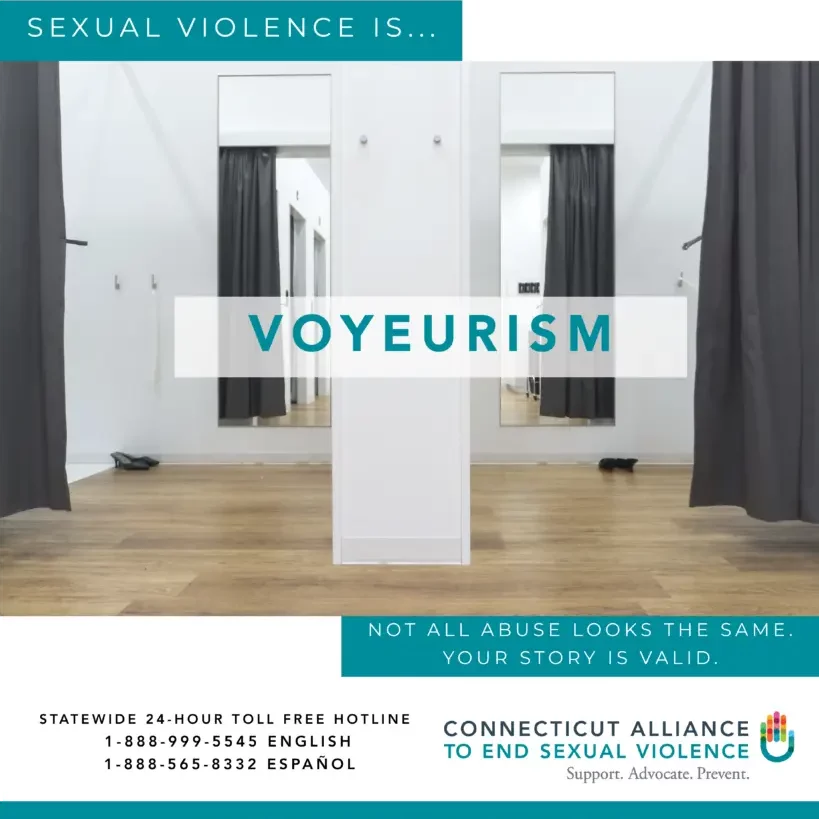
Voyeurism is the act of watching unsuspecting and non-consenting persons while they are undressing, naked, showering, or engaging in sexual activity for sexual pleasure.
Voyeuristic Disorder is defined under the Diagnostic and Statistical Manual of Mental Disorders- 5th Edition (DSMV) as a paraphilic disorder. While not all those who exhibit voyeuristic behaviors meet the criteria for the mental health diagnosis, there are several behaviors that fall under this intrusive, harmful and potentially criminal behavior.
Voyeurs are typically thought of as the “Peeping Toms” who watch unknowing/non-consenting female neighbors undress or shower through their open blinds. However, voyeurism includes a range of behaviors that have expanded even further during this digital age that can impact anyone.
Victims of voyeurism have been identified as females, males, children and the elderly. Anyone can be a victim of voyeurism and by design, many may never know they have been watched, filmed or recorded. Modern-day voyeurism often involves cameras and other recording devices like drones that have been found in public hotels/motels, gyms, changing rooms etc. Behaviors known as “upskirting” or “downblousing” are considered voyeuristic and include the non-consensual filming up someone’s skirt or down their top/blouse with a small camera or smartphone.
Additionally, hacking into another person’s digital device (smartphone, laptop/desktop camera, video game console, etc.) for these purposes can also be considered voyeuristic and predatory.
Individuals at higher risk for these types of victimization in particular, are children and the elderly who may have less knowledge and understanding about internet safety and security. It is important that in a society that heavily depends on technology and digital devices, appropriate preventative steps are taken. A lack of knowledge about technology or the risk of voyeurism, does not make the crime the victims’ fault. The perpetrator is fully to blame.
Some preventative steps individuals may take include:
- Increase your knowledge about voyeuristic behaviors and when they can cross into criminal behavior
- Increase your knowledge about internet safety and security
- Identify resources you can report any suspicions or incidents of voyeurism to
- Learn about ways you can help support someone that may be a victim of this crime
